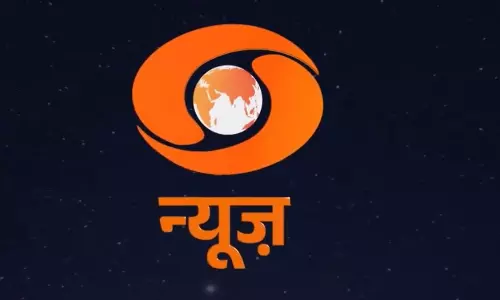
A lunar mission in its dream orbit
text_fieldsWith the triumphant launch of Chandrayaan-2, it has once again been proved that the place of India in space research and exploration is with the big powers. Even earlier, with the successful launch of Chandrayaan-1 (2008), Manglayan (2014) and Astrosat (2015) the world was able to see the strides achieved by India in this domain. And in the new century, none of ISRO's missions have missed the target; in fact many countries have borrowed our technology too. For that very reason, when the lunar module soared into space on the most modern GSLV Mark-III (MK-1) rocket from the second launchpad of Satish Dhawan Space Centre in Sriharikota, the scientific world had little doubt about it crossing the touch line.
What is now over is the first phase of the mission of taking the vehicle to the earth's orbit. It will be targeting proximity to the moon in the next one and a half months. When in the first week of September, the Lander (Vikram) separates from the orbiter while getting close to the moon, the next and most challenging part will be the soft landing on moon's surface. And when that happens, Chandrayaan can claim the credit of being the first spacecraft to have made a soft landing in the southern pole of the moon. With the rover (Pragyan) inside the lander descending on the surface of the moon and starting explorations, it can be hoped that it will mark a new chapter in the history of lunar exploration and research. Kudos to all who worked behind this signal achievement – adding colour to the endless space dreams.
It is only coincidental that Chandrayaan's second mission occurred on the fiftieth anniversary of man's landing on the surface of the moon. After the Apollo missions, which took Neil Armstrong and 11 others to the moon, the focus of space explorations had slipped out from moon. After years, now countries including America have turned again to the moon with new missions. Over the last 10 years, at least four lunar missions of NASA have been conducted successfully. And in January this year, China too landed a robot on the moon. Japan and European Space Agency are going ahead with new plans. The mission of Chandrayaan has to be seen as part of this 'moon race'.
More than as a project of gathering data that facilitates a better understanding of the universe, the Apollo missions were celebrated as a display of achievements made in science and technology; but the missions in modern times have other goals too. Take the case of Chandrayaan itself. In its first mission, it confirmed the presence of hydroxyl ion, and Chandrayaan-2 is aiming at its follow-up. In fact the southern pole has chances of the presence of water too. According to studies by NASA, it has 30 crore ton of water ice. And whether moon will serve as intermediate station of man's space explorations, will hinge on the confirmation of this presence of water. And that is the very reason why the southern pole of the moon has been chosen for soft landing. Another area of focus will be study about the soil (regolith) on moon's surface.
It has by now been proved that it is rich with the element Helium-3. Chandrayaan also has the long-term goal of bringing to earth this isotope – valued as a non-radioactive fuel. If that is achieved, it can become a solution for the energy crisis of the earth. In other words, more than merely being a means of studying the origin and evolution of the solar system, these celestial missions have other financial interests too. In many natural satellites, related mining explorations have already started. Research institutions like the Deep Space Industries in the US, have formulated projects for producing items including electronic equipment needed for 3D printing technology, by using the minerals collected from natural satellites. Fuel required for space programmes and water can also be collected from such planets. And this is where the possibility of new 'space war' lies. But unless these rivalries remain healthy, that can lead to major hazards.
Although the first astronaut mission from earth of Yuri Gagarin was a Soviet victory and that of Neil Armstrong an American stride, their benefits are for the entire mankind. It is on the strength of knowledge gained through such missions, that subsequent space travels were all made possible. That being so, it will only be reasonable to not tie these feats to the narrow confines of narrow nationalism or party politics. Unfortunately, in the case of Chandrayaan's launching, attempts from at least some quarters have been made to present it in that perspective. Let us hope that Chandrayaan's goals to open the doors to the wide horizons of scientific research, will come to fruition.























